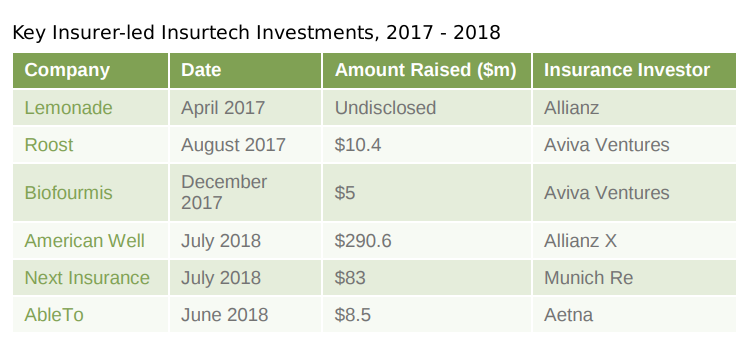Artificial Intelligence and ‘AI’ seem to be on everyone’s lips at the moment. It almost seems mandatory that companies have an AI strategy and an adoption plan. Some companies even claim that they are already AI-enabled, which not only impresses clients and business partners, and puts pressure on their competitors and peers.
But let’s look beneath the surface and think about the reality.
What AI is – and isn’t
Pure ‘AI’ comprises self-learning, advanced systems with which we interact in natural language. It’s indistinguishable from dealing with a human – in fact the ‘Turing Test’ (named after Alan Turing, an eminent British scientist working on machine learning in the 40’s and 50’s ) is a test for machine intelligence, which determines whether a computer is ‘intelligent’ or not.
Many companies claiming to be AI-enabled are, at best, using the same sort of advanced and predictive analytics that’s already been around for over a decade. The difference is that they are using it better, and in areas of business where it brings new insights into customer behaviour, operational efficiencies and risk management.
Others are just using specific computer programs or ‘Apps’ to assist in the process – chatbots, voice recognition, face recognition for example – which may be technologically clever, but aren’t AI in its purest form.
The insurance industry: Primed for transformation
Different industries are moving at different speeds. Financial services, telco and retail are relatively early adopters, but the rest are catching up quickly. This is being partly helped by the movement of staff from one sector to another, which is a by-product of a shortage of experienced resource in the tech and analytics sectors.
Of these industries, the insurance sector is viewed as being one which is most primed for transformation. In general terms, it’s a business which remained fundamentally unchanged for over three hundred years. The basic insurance principles of indemnity, utmost good faith and subrogation are firmly established in case law and statute, and remain intact to this day. It’ll be especially interesting to see how these principles evolve in this new, data-driven age. How will insurers rely on issues such as non-disclosure when there is so much available information in the public domain? Maybe one of the real winners in this age of change will be the legal profession, who will probably need to reinterpret many of the basic tenets of insurance principles and practice?

Juniper Research
But the insurance technology genie is well and truly out of the bottle. A new study from Juniper Research said emerging InsureTech services will exceed $400bn by 2023, up from an estimated $187bn in 2018.
Leaders and followers
One big challenge for businesses is whether they take the innovation initiative in the use of AI. Should they be early adopters, with so-called ‘first mover advantage’, or should they wait and see? The commercial world is littered with both types of innovators. ‘First movers’ (like Coca Cola) have the opportunity to create the market in a way they prefer; ‘Second Movers’ (like Apple) can take the learning (and mistakes) of others, and implement more effectively and at lesser cost, and yet can still be innovative.
There are geographical elements to consider as well. The pace of technological change in North America and Canada is significantly quicker than in Western Europe, but some say that it’s beginning to fall behind that of Asia. There are some good reasons for this. North America has always been relatively tech-savvy compared to Europe, historically with a 5-7 year gap between them (although that gap has narrowed recently and in some areas has disappeared completely, such as in capital risk management). On the other hand, the Asian analytics marketplace is rapidly growing, is thought to be more dynamic, and tends to have shorter chains of command (which allows quicker decision making.)

Residential property insurance in the US and Canada has also increasingly lent itself to automation. This is mainly by virtue of the fewer types of property constructed, when compared to Europe which has a much greater variety of construction types. This has helped North American insurers and brokers with more accurate rebuilding cost valuations, and especially in establishing the accuracy of insurance premiums. Effective use of GIS is also playing an important part in risk management.
In the auto space, recent developments especially in autonomous vehicles also offer new challenges to the insurance sector. These new ideas invite many new questions such as ownership of data, and maintenance / upgrading of devices and software. Vehicles have become much more complex and even the more basic models are more like mobile computers. Whilst there may be fewer accidents, the average cost of repair has increased. As a by-product of technological progress, the role of the auto claims inspector and functionality of auto repair body shops have been transformed.
In the commercial and specialist insurance sectors, progress is slow but steady. New technologies are increasingly being used such as GIS, remote imagery, tracking and location intelligence, but there is much further to go. More effective use of remote devices will inevitably impact on how policy conditions and warrantees are applied, allowing earlier policy decisions to be made. Reinsurance will become more accurate. More effective use of technologies in this sector will lead to some insurers improving the accuracy of pricing and creating compelling market advantage.
Beyond this, more effective use of technology including relatively straightforward business intelligence solutions could -and should – allow much quicker settlement of business interruption / consequential loss claims in the commercial sector, where in many cases there is over-reliance in spreadsheet calculations.
What will AI mean to the broker community?
One great challenge will be for brokers to be proactive in this space, rather than reactive, and to avoid being ‘second fiddle’ to insurance carriers in the technology space. Isn’t there’s a risk that automation could in time marginalise some of the services which brokers offer, so to some extent isn’t there a threat from AI? Brokers cannot afford to be complacent in respect of emerging technologies.
Of course, the flip side of ‘threat’ is that of ‘opportunity’. Brokers play a special part in the insurance ecosystem especially where complex risks or coverage is needed, and one of their key skills is to understand the customer’s needs and obtain the right level of cover at the most appropriate price. How long is it before we see automated ‘Insurance Advisors’ supporting qualified (and human) brokers in creating the right solution, in the same way that investment banks are increasingly using automated ‘Wealth Advisors’?
Beyond this, new and complex risks will increasingly emerge through the use, and mis-use, of new technologies, and where there is little or no precedent. For the broker community, won’t understanding these new risks become a vital part of their toolbox?
And to conclude, don’t brokers also have a role to play at the so-called ‘Moment of Truth’, which is at the point of claim? Can’t the broker community be one of the catalysts which encourage the effective use of technology not only in being proactive in preventing losses, but also in ensuring early and fair policy settlement within the terms of the cover? Effective use of technology in delegated authority might also enable the broker not only to proactively progress the claim, but also ensure that the customer becomes a lifelong customer and advocate.








